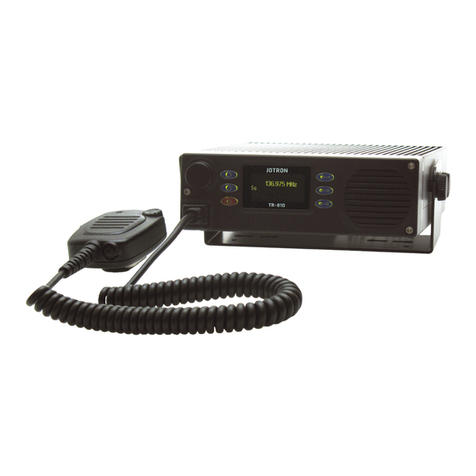JOTRON electronics a.s.
December, 99
Page 7
TABLE OF CONTENTS
1. TECHNICAL DATA ........................................................................................................................................9
1.1. GENERAL DATA.................................................................................................................................................9
1.2. RECEIVER DATA..............................................................................................................................................10
1.3. TRANSMITTER DATA: ......................................................................................................................................11
2. EXTERNAL CONNECTIONS ...................................................................................................................... 13
2.1. FRONT PANEL COMPONENTS AND CONTROLS ..................................................................................................13
2.2. REAR PANEL CONNECTIONS ............................................................................................................................16
3. INSTALLATION ............................................................................................................................................21
3.1. EQUIPMENT SAFETY PRECAUTIONS .................................................................................................................21
3.2. POWER ON .....................................................................................................................................................21
3.3. CHANGING THE OPERATING FREQUENCY.........................................................................................................22
3.4. SELECTING PRE-PROGRAMMED CHANNELS......................................................................................................22
3.5. PROGRAMMING A CHANNEL............................................................................................................................22
3.6. SQUELCH ON/OFF.........................................................................................................................................22
3.7. KEYING THE TRANSMITTER .............................................................................................................................22
4. INTERNAL ADJUSTMENTS .......................................................................................................................23
4.1. SQUELCH ADJUSTMENT ..........................................................................................................................23
4.2. MODULATION AND POWER ADJUSTMENT .........................................................................................24
5. TECHNICAL DESCRIPTION, TR-6101 .....................................................................................................27
5.1. GENERAL.....................................................................................................................................................27
5.2. POWER SUPPLY / POWER BOARD..........................................................................................................27
5.3. FRONT BOARD............................................................................................................................................28
5.4. LINE INTERFACE BOARD.........................................................................................................................28
5.5. 10W UNIT .....................................................................................................................................................29
5.6. TRANSMITTER UNIT, TR-6201.................................................................................................................30
5.7. RECEIVER UNIT, TR-6201 .........................................................................................................................30
5.8. AUDIO UNIT, TR-6201................................................................................................................................31
5.9. CONTROL UNIT, TR-6201..........................................................................................................................32
5.10. FRONT BOARD, TR-6201 .........................................................................................................................32
6. APPLICATIONS ............................................................................................................................................33
6.1. INTERFACING WITH A REMOTE CONTROL.........................................................................................33
6.2. CONNECTING ONE TRANSCEIVER TO A RC-3104 .............................................................................................35
6.3. CONNECTING TWO TRANSCEIVERS TO A RC-3104...........................................................................................36
6.4. CONNECTING ONE TRANSCEIVER TO A RC-3401 .............................................................................................37
6.5. CONNECTING TWO TRANSCEIVERS TO A RC-3401...........................................................................................38
7. PARTS LISTS .................................................................................................................................................39
8. DRAWINGS ....................................................................................................................................................73





























